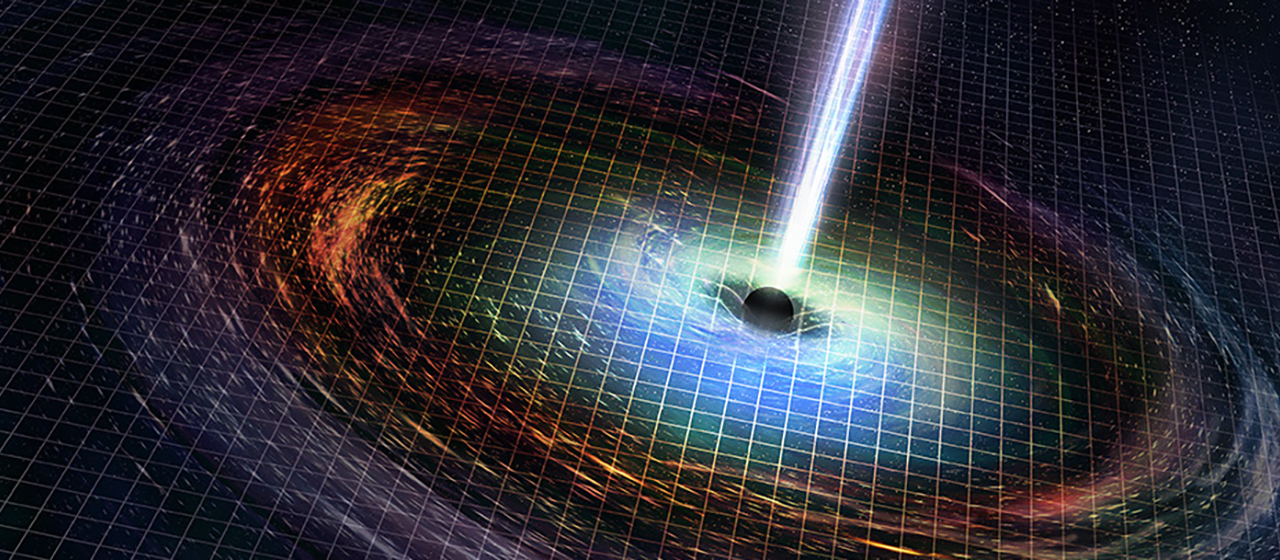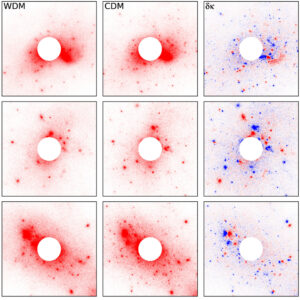Research
Research
SIfA brings together researchers in astronomy, astrophysics, astroparticle physics and instrument building and undertakes research is a wide range of fields. Our researchers are working at the cutting edge of astrophysics using novel survey techniques and data analyses to push the boundaries of what we know about astronomy. We collaborate widely with other astronomers in Australia and overseas.
Find out more about our main research areas below. We encourage you to contact members of the research teams to discuss current or possible future projects.
Stars and Exoplanets
Stars are the building blocks of the universe. At SIfA we use state-of-the-art techniques to study stars and their planetary systems.
One of these techniques is high-resolution imaging which allows to study details on the finest possible scales. The most critical events in the stellar life cycle, from birth swathed in a vast disk of dust, to their spectacular end as a swollen red giant, occur on a stage so remote that extremes of magnification are required to witness the key action.
Another technique is asteroseismology, the study of oscillations in stars, which probes their interiors in exquisite detail. We use data from NASA’s Kepler and TESS missions to measure tiny changes in stellar brightness, which allow to measure their internal properties, and also to infer the properties of their planets.
Find out more about asteroseismology
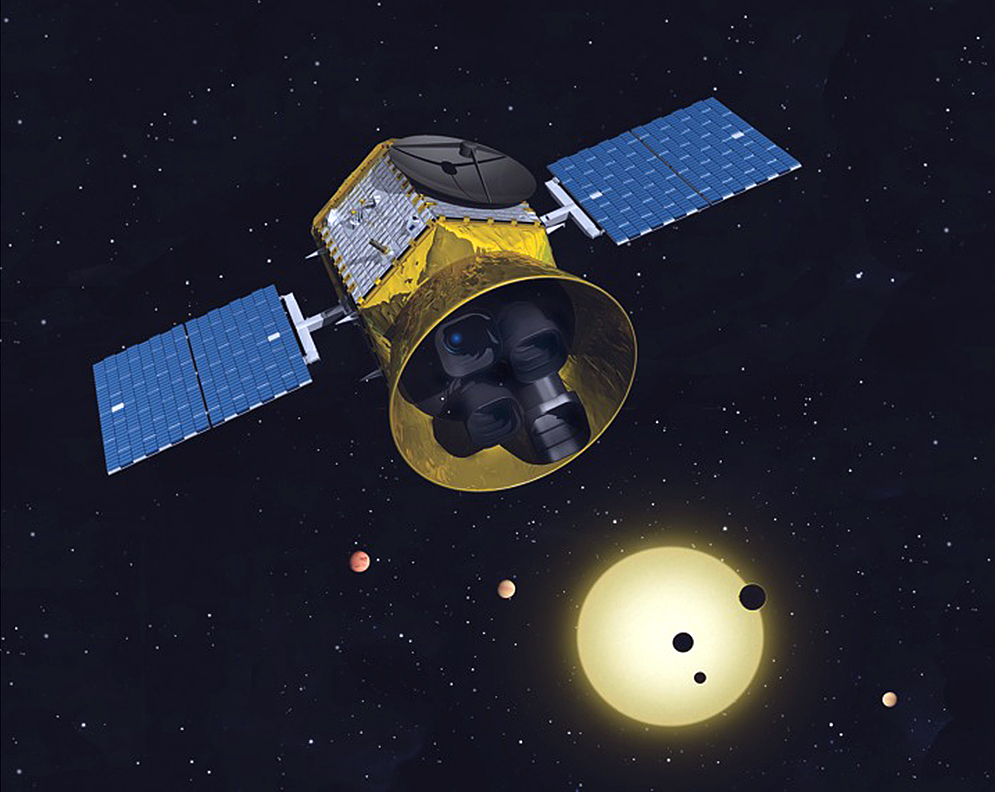
Galaxies & Their Evolution
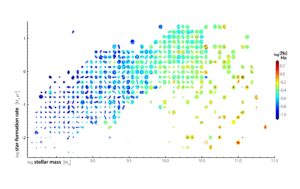
Figure 1: image of galaxies in gas emission line ratio measured by SAMI, distributed in a plan of star formation vs. mass. From Green et al (2018) Credit: Jesse van de Sande & Scott Croom.
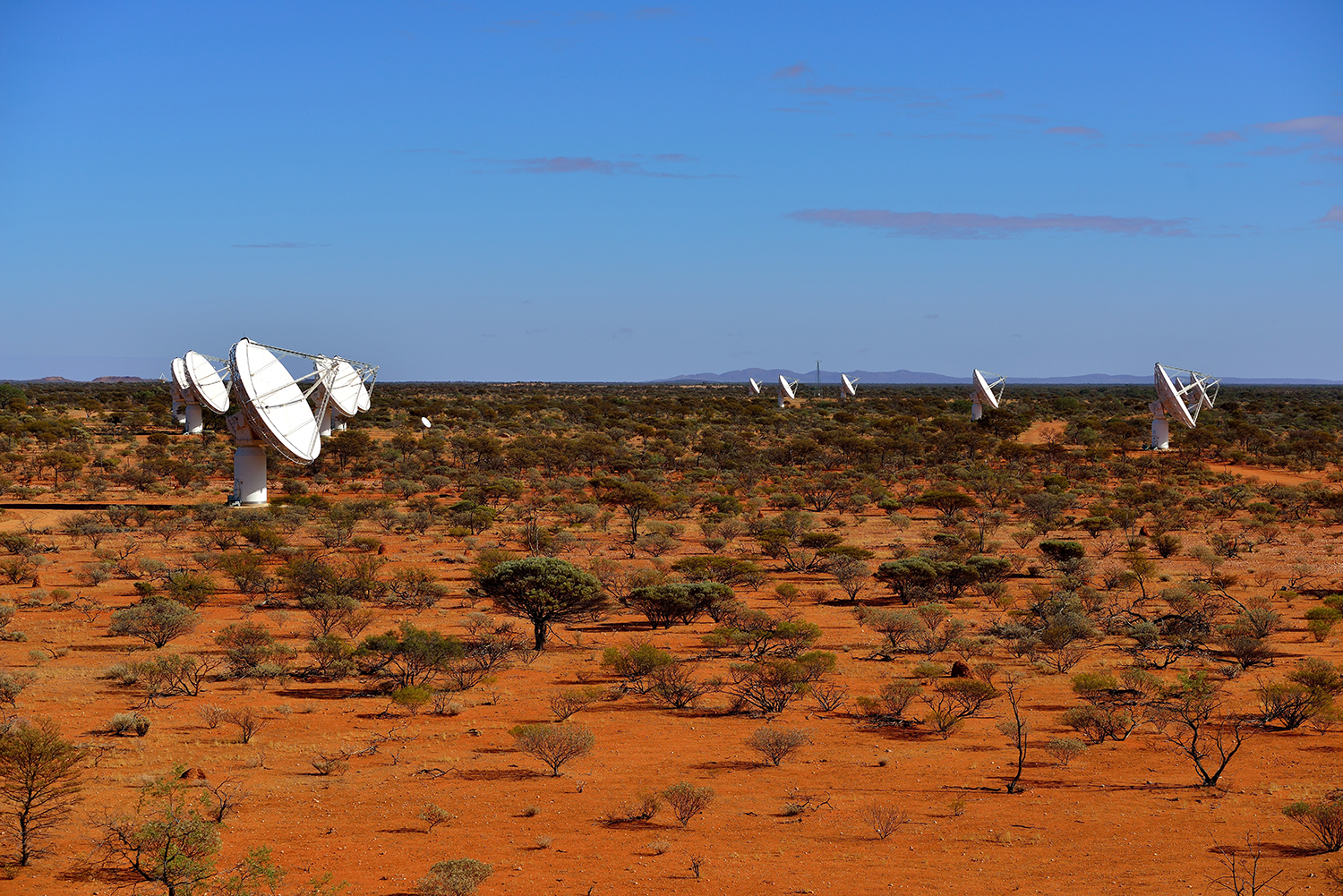
Figure 2: The ASKAP radio telescope, operated by CSIRO at the Murchison Radio Observatory (MRO) in Western Australia – site of the future international Square Kilometre Array(SKA). The telescope’s remote, radio-quiet location allows it to observe detect neutral hydrogen in distant galaxies across 8 billion years of cosmic time. Image credit: CSIRO
SIfA astronomers are leading major international projects to gain a clearer understanding of how galaxies form and evolve. Galaxies are the building blocks of our Universe, but discerning the physics behind their formation is a challenge, not least because of the huge complexity of each galaxy and the many parameters that control how they evolve. We need to measure stars, gas, dark matter and their central super-massive black holes to gain a complete picture.
SIfA is using new technology to build 3-dimensional pictures of galaxies. An example of this is the SAMI Galaxy Survey, using an instrument developed at Sydney to measure spatially resolved spectroscopy of over 3000 galaxies. Now our new instrument, Hector, on the Anglo-Australian Telescope has begun a survey of “3-D” images of 15,000 galaxies. Large samples are crucial in being able to fully connect galaxies to their surrounding environments and examine their rich diversity.
Researchers at SIfA are leading efforts using state-of-the-art international facilities such as the VLT to push our observations into the more distant Universe as well as pick apart local galaxies in exquisite detail. Key questions being tackled include: how common are galaxies like our Milky Way? How does the angular momentum of galaxies evolve over cosmic time, and how does this influence their evolution? What is the impact of feedback from accreting supermassive black holes at the centres of galaxies?
The Australian SKA Pathfinder (ASKAP) radio telescope allows us to break new ground in the study of neutral hydrogen in distant galaxies. Hydrogen is the most abundant element in the Universe, and provides the raw material from which new stars can form within galaxies. Radio observations of the 21cm hydrogen line allow us to track the build up of matter in the form of neutral gas over the past 7-8 billion years, and provide an important ‘missing piece’ in the galaxy evolution puzzle. SIfA astronomers, working with our ASTRO 3D colleagues on the ASKAP FLASH survey are studying the 21cm line in absorption against bright background radio sources to probe the amount and distribution of neutral hydrogen in distant galaxies. We will link our radio measurements both to optical studies of these distant galaxies and to theoretical simulations to provide new tests of current galaxy evolution models.
For more information contact: Scott Croom, Elaine Sadler, Julia Bryant, Joss Bland-Hawthorn, Jesse van de Sande
Cosmology & General Relativity
The question of how the universe has evolved over cosmic time is one of the most fundamental in astronomy. We know that it has been moulded by gravity, written within Einstein’s general theory of relativity, but the complex physics of gas, stars and magnetic fields means that making predictions from our theories is not straight-forward. At SIfA, astronomers undertake detailed computer simulations of the growth and evolution of comic structure, following the collapse of gas and dark matter from the smooth universe after the Big Bang to the wealth of galaxies we see around us today.
These simulations present a huge data-challenge and supercomputer techniques are needed to unpick the details and reveal the structure. New algorithms allow astronomers to pick out the individual galaxies amongst the hierarchy, with the implementation of novel numerical physics tracing the gravitationally lensed paths of light rays from the distant universe. Through these synthetic universes, astronomers are able to understand the complex processes that have shaped the universe, and even test the fundamental nature of the gravity at work.
But is our universe alone? Some think it is but one of a potential infinite number of other universes in the multiverse. Astronomers at SIfA are leading the world in exploring this possibility, examining whether the laws of physics are fine-tuned for the appearance of complexity and the implication for our place in the multiverse.
For more information contact Geraint F. Lewis
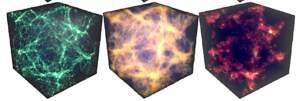
A cosmological simulation including the physics of the dark sector, showing dark matter (left), gas density (centre) and gas energy (right) – From List et al. (2019)
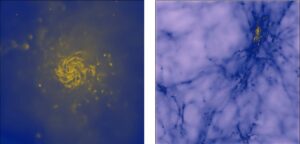
Cosmological simulations of the formation of galaxies in a universe with a different cosmological constant, with starkly different evolution to our own – From Barnes et al. (2018)
Galactic Archaeology
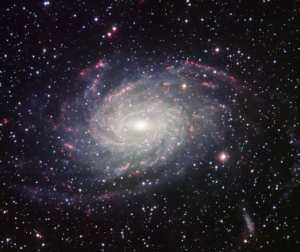
Australian astronomers are world leaders in the field of Galactic archaeology. The ages, chemistry and motions of stars across the Galaxy can be used to unravel how it first formed and evolved over billions of years. SIfA leads the GALAH spectroscopic survey to measure precise radial velocities and abundances of 30 elements for a million stars. The widely used Galaxia code was developed at SIfA. We are leading the way in interpreting the GALAH data aided by the ESA Gaia mission within a complex, evolving Galactic system.
Since GALAH stars have measured ages, we can learn how the familiar element table has evolved from conditions in the early Universe when only hydrogen and helium existed. Our most recent breakthrough is finding that previously undetected lithium is locked up in stars and not, as claimed for 50 years, to be “a missing element in the early universe due to new physics.”
A major SIfA strength is building dynamical models of the Galaxy through the use of both analytic functions, cosmological and N-body simulations. SIfA is a leader in the S5 spectroscopic survey that tracks the motion of distant stellar streams to measure the shape of dark matter in the Galactic halo. Another unique aspect of SIfA is the powerful synergy between the Galactic archaeology group and the world-leading asteroseismology group, a relationship that has been mutually beneficial. SIfA has led the highly succesful K2GAP survey that uses the NASA Kepler satellite to incorporate seismic information into the GALAH survey, leading to better seismic relations, stellar masses and ages.
For more information contact Joss Bland-Hawthorn, Geraint Lewis, Michael Hayden, Thorsten Tepper Garcia
Solar Physics
Solar flares are dynamic events in which magnetic energy is released in the solar corona. Recent work on flares includes modelling the magnetic field in the corona for active regions which produce large flares, with the aim of understanding how the magnetic field changes during the flare.
The solar astrophysics group works in areas related to solar activity, which is dynamic behaviour in the Sun’s outer atmosphere (the solar corona) caused by the evolution of intense local magnetic fields. The most dramatic examples of solar activity are solar flares, which involve the explosive release of magnetic energy on time scales of minutes. Flares and related coronal mass ejections directly affect the Earth because they can produce dangerous local space weather conditions. Space weather storms can lead to enhanced aurorae, damage to satellite electronics, radiation risks for astronauts and polar flight crews, and destruction of components in electricity grids at ground level. Recent work by the group includes modelling the magnetic field in the corona for active regions which produce large flares, with the aim of understanding how the magnetic field changes during the flare, and devising a new measure of magnetic helicity – a quantity which represents the linkage of magnetic fields, and is approximately conserved in magnetic energy release.
For more information contact Mike Wheatland or Don Melrose.
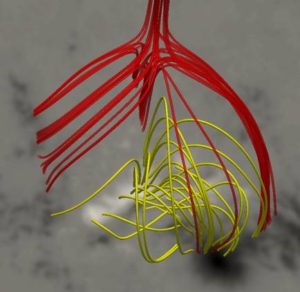 The figure shows a model constructed for active region 12017, based on observations at 17:36 on 29 March 2014. This region produced a large (X-class) flare minutes later.
The figure shows a model constructed for active region 12017, based on observations at 17:36 on 29 March 2014. This region produced a large (X-class) flare minutes later.
Astroparticle Physics
Does dark matter move slowly, or does it zip around? In synthetic universes, we can test this with gravitational lensing, which reveals just how clumpy matter is – From Mahdi et al. (2016)

What will happen in the future universe? With detailed simulations we can trace the evolution into the time where galaxies and stars die – From Salcido et al. (2018)
Astroparticle physics is where the world of the microscopic, that of fundamental particles and fields, meets the large-scale universe. At the University of Sydney, astronomers and physicists are exploring this complex interface by examining the impact of particle physics on the evolution of the universe, pushing the boundaries of our theoretical understanding of how dark matter interacts with normal atoms.
Within SIfA, the physics of the “dark-sector” is being included in large-scale simulations of the growth and evolution of galaxies and structure in the universe, tracing how the interactions and decay of dark matter can inject energy into gas spread between the stars. This heating can suppress the birth of stars, and so the universe we see through our telescopes could be shaped by the physics we cannot see. With these new massive simulations, SIfA is revealing just what the next generation of ground and space telescopes will reveal about the dark universe.
But have we already seen the signature of dark matter? Some think that an excess of high energy radiation from the centre of our Galaxy could be pointing the way, but the signal could be complicated from the emissions from dead stars at the galactic core. SIfA astronomers are harnessing the power of neural nets and deep learning to peel away the complexities and reveal whether dark matter lurks within the Milky Way. SIfA members are also establishing theoretical models of dark matter candidates that they confront to the latest observational and experimental data in order to finally shed some light on the origin of this mysterious substance.
For more information contact Geraint F. Lewis, and/or Celine Boehm
Radio Transients
Transients are astronomical objects that appear and disappear or change rapidly; they are our window to some of the most extreme processes in the Universe. Transient events can occur when black holes form, causing supernovae and gamma-ray bursts; when stars collide with black holes; or when hot, magnetised planets interact with their host stars. There are also a multitude of mysterious transients of unknown origin, like fast radio bursts.
In 2017 we detected radio emission from the first gravitational wave event associated with a binary neutron star merger, GW170817. Binary neutron star mergers emit more energy than the Sun will produce in its entire lifetime and so provide a laboratory for studying physics in extreme environments that can not be replicated on Earth. Electromagnetic follow-up allows us to determine key physical properties of the explosion and subsequent evolution.
Radio astronomy is undergoing a revolution in the discovery and study of transients. We lead projects on cutting edge telescopes such as the Australian SKA Pathfinder (ASKAP) and the Murchison Widefield Array (MWA) that are allowing us to see the dynamic radio sky in ways that were not previously possible.
For more information contact Tara Murphy
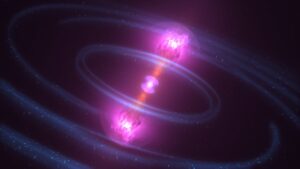
Some of the debris blasts away in particle jets moving at nearly the speed of light, producing a brief burst of gamma-rays.
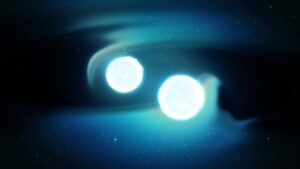
Light bursts from the collision of two neutron stars.
Astralis-Usyd
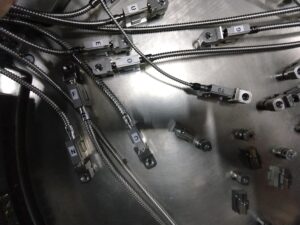
Hector field plate – Credit: Julia Bryant.
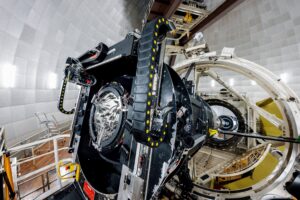
The Hector instrument mounted on the telescope at Siding Springs Observatory – Credit: Adeline Wang
The Astralis Instrumentation Consortium (Astralis) is a combined team of astronomy instrumentation experts across three nodes: one is based at The University of Sydney within the SIfA group and the other two nodes are at Macquarie University (Astralis-AAO), and the Australian National University (Astralis-AITC). Together, we create world-leading astronomical instrumentation to help survey and better understand our night skies.
At the Astralis-USyd node we currently are developing new technologies for astronomical instrumentation in optical fibres, photonics, interferometry and robotic positioning. The recently commissioned Hector instrument for the Anglo-Australian Telescope features our new optical fibre imaging bundles, called Hexabundles, and a new robotic positioning system. Ongoing instrumentation builds include the Heimdallr fringe-tracking and Advanced Photonic Nuller (APN) instruments for the VLBI port on ESO’s Very Large Telescope (VLT), which will enable high angular resolution astronomy such as exoplanet science. Our collaboration with the SUBARU telescope in Hawaii (run by Japan) has us building the GLINT, VAMPIRES, and SCExAO/Ninja hexabundle fibre cable. All of our instruments are based on new in-house technologies that give a unique new edge.
For more information and enquiries about Astralis-Usyd, or internships at Astralis-USyd contact the Director, Julia Bryant.


